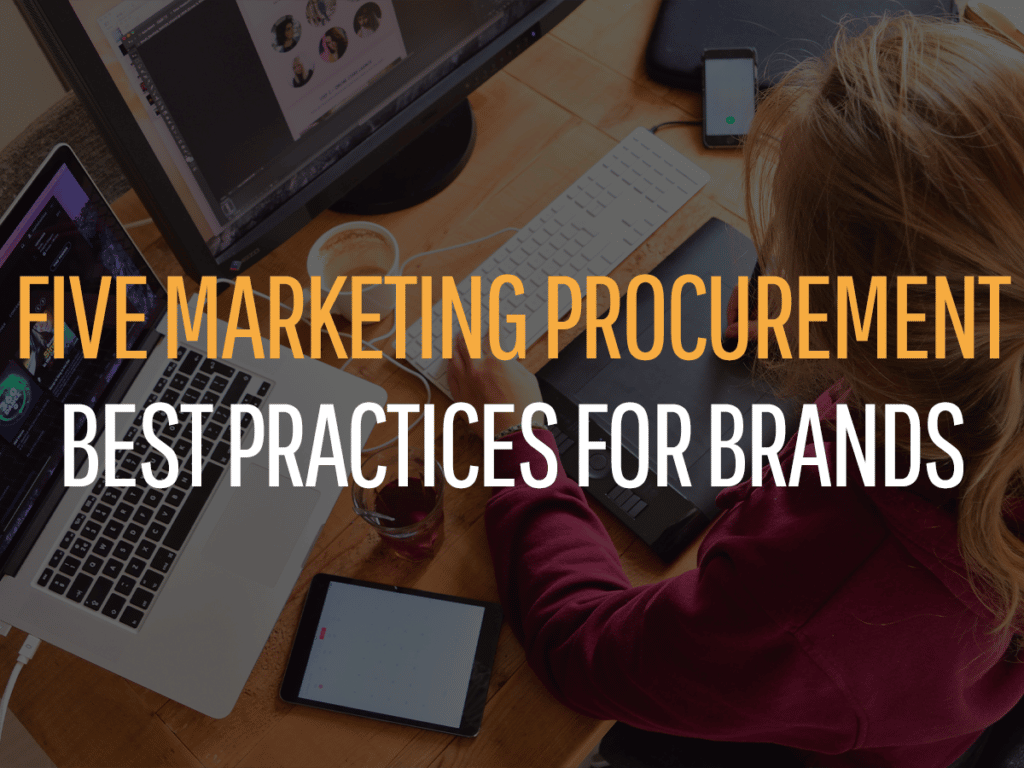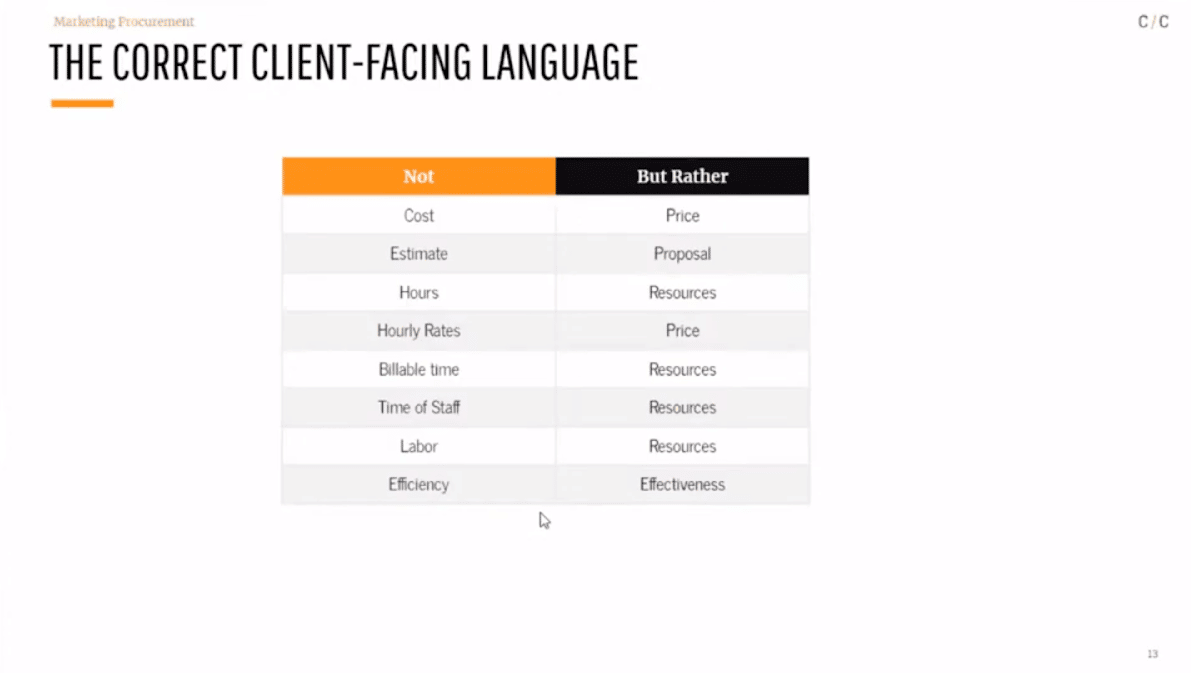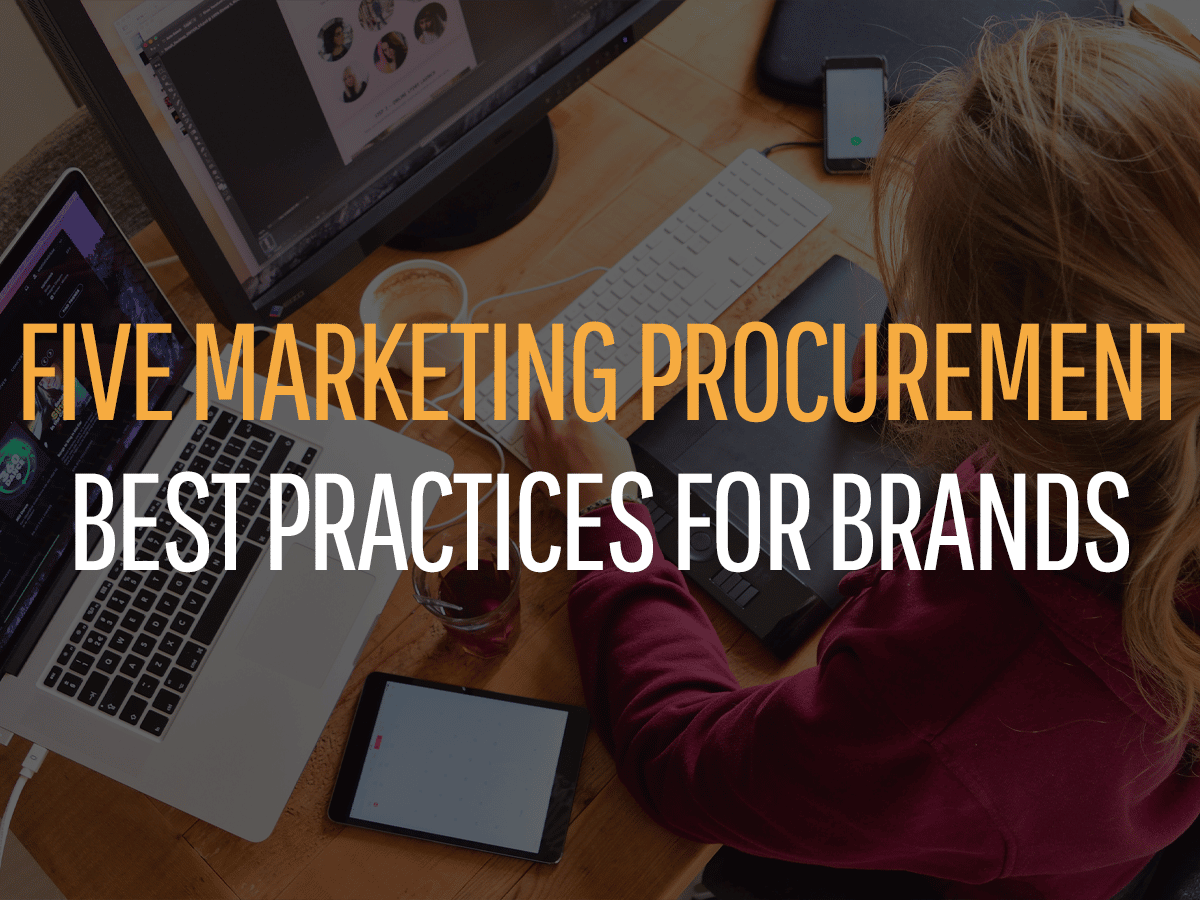Marketing Procurement Best Practices
Here’s how to work with your agencies for procurement that delivers value without reducing investments.
By definition, procurement is the act of securing goods or services required for a business to grow. We tend to think of procurement in terms of physical items, or our current digital age, in terms of software tools or services that fulfill a specific business function. But when you think about procurement from a marketing perspective, the meaning shifts from what you need to grow to growth itself.
Therefore, marketing procurement can be defined as obtaining the maximum value for every dollar spent on marketing. It’s reviewing your portfolio of agencies, channels, and marketing assets, then deciding how to work those into your strategy in a way that will provide the best return on investment.
To make the most of your marketing procurement, brands need to speak the procurement teams’ language and treat marketing like an investment, not a “product.” Chief Procurement Officer Brett Colbert offered his insight in a Chameleon Collective webinar held last year. Here’s the Too-Long-Didn’t-Watch version of what he shared:
It’s Always Okay to Negotiate
Colbert clarifies that an important thing to remember about procurement teams is that they’re salespeople. “They’re brokers within the organization. They’re not buying marketing services, they don’t own the scopes of work, and they don’t own the P&Ls. Procurement’s goal is to deliver strategic sourcing and value to the business. Knowing this, marketing agencies can better craft their delivery to demonstrate how they create this value.”
To do this effectively, agencies must understand that value and cost-cutting are not one and the same. Many brands try to approach cost savings by cutting agency fees, but this only results in a loss of value. Colbert refers to this as a top-line investment: It might help brands hit a certain KPI, but it also impacts their profitability when marketing efforts are severed. It also gives organizations a reputation as being cost-cutters that could deter other agencies from working with them in the future.
To help brands see this gap and avoid falling into it, Colbert recommends negotiating. Focus on the value aspect instead of costs alone so brands can see where their money is going and what it’s doing for them.
Take a Bottom-Up View on Budgeting
Many companies struggle with budgeting their marketing. They review last year’s budget and adapt it for the upcoming year. This can be a good start, but as Colbert points out, a better approach is to base your budget on investment, not just cost.
“I think more brands need to take a bottom-up view on budgeting and base their estimations on what they really need, not what they spent last year. This goes back to understanding the value of your marketing activities and agency ROI. When you know what you want your bottom line to reflect, you can work from there to the top line to figure out what you need to spend money on—and how much.”
Colbert mentions that you might have to spend more to get more using this approach which is part of marketing procurement best practices, but you will most certainly get less if you do less. This is a joint effort between agencies and procurement: Both sides should understand what marketing costs and the value of those marketing efforts, at which point the procurement team can manage the budget accordingly.
Use the Right Client-Facing Language
Most brands understand where they want to be, but they don’t always have the metrics in place to tie their actions to those outcomes. A good first step toward helping them make this connection is to focus on your outputs, or delivery-based projects that are tied to specific scopes of work. Examples of this could be specific projects, campaigns, or content that you will produce as part of their strategy.
Colbert warns against putting too much emphasis on inputs, which are your time-, material-, and labor-based rates. When you start talking about inputs, you’re giving your brand clients a tool to start negotiations.
One example Colbert gives is the cost vs. price comparison. “You never use the word ‘cost,’” he instructs. “You want to use the word ‘price’ to demonstrate how much they’re going to invest and show them what they’re going to get. ‘Cost’ carries a nuance of ‘estimate,’ which we all know can be subject to change.”
Here’s a list of other “use this, not that” terms that Colbert believes can drive more productive conversations with clients:
Colbert believes that using the right client-facing language is the key difference between a professional buyer and a professional seller. Professional buyers are those who fail to establish value upfront. They defend costs instead of proving value. What’s more, they believe all price challenges are real and are willing to reduce the price without reducing value just to secure the deal. They also don’t know when to walk away from a deal.
Professional sellers are the exact opposite. If you don’t have a professional seller on your team, Colbert suggests putting 20% of your contract revenue into bringing in a professional seller, broker, closer, or someone who can train your team to use the right client-facing language consistently. Once you and your team learn that language, practice it until it becomes second nature. It’s a huge investment, but it’s one that Colbert knows will pay you back in spades.
Measure What Matters
According to Colbert, agencies can become professional sellers, justify rates, and not lower the price without lowering value when the right KPIs are in place to support your proposals. To do this, they need to measure what matters, both from the agency side and the brand side.
Colbert believes that defining these metrics should be a collaborative approach. Ask the brands you serve which metrics matter to them. Then, share the metrics that matter to you. This will allow you to find alignment, dive deeper into their business, and help them grow.
When you understand their metrics and can deliver top-line growth, you may have fewer brands challenging how much you cost and eliminate the fear that procurement is all about cost-cutting. In this manner, they’ll confidently allow you to follow marketing procurement best practices.
Watch the full replay of Brett Colbert’s webinar here.







